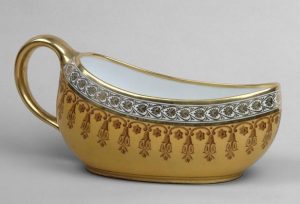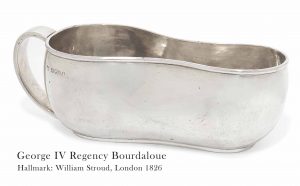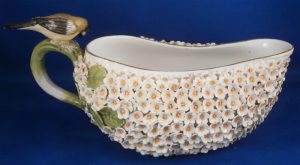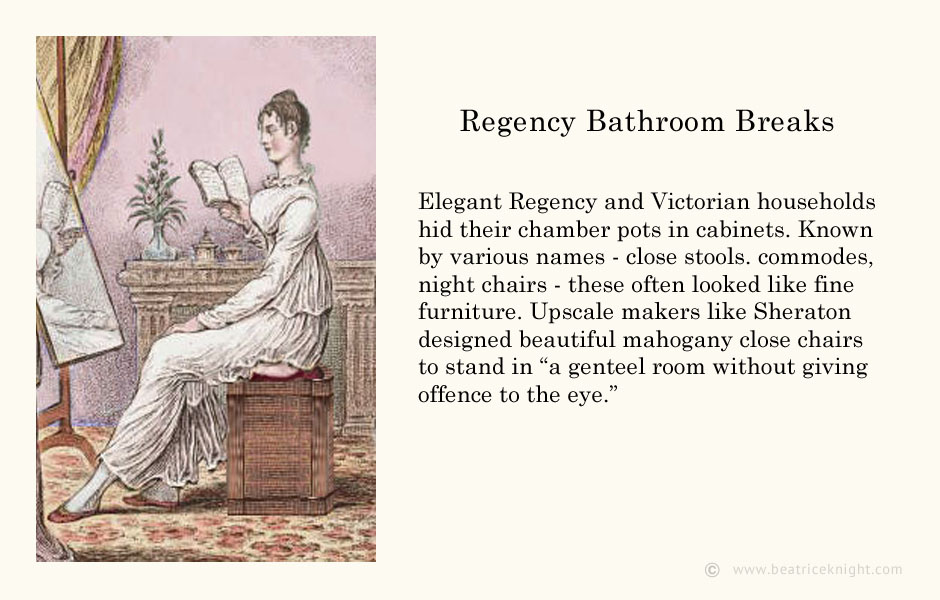
When Georgian and Regency era women HAD to go and there were no public toilets, the bourdaloue was a small boat-shaped chamber pot designed to be used standing up. Since most women did not wear knickers, a hassle-free bathroom break could happen virtually anywhere, without having to touch icky facilities used by hundreds of others.
For those who did not have their own maid to manage the process, the bourdaloue contents could be tipped into the bushes or the nearest alley and the portable lady-potty rinsed next time water was available. The bourdaloue was indispensable during the era of coach travel, when progress was slow and roads mostly atrocious. If an inn offered a retiring room for women, there might be a chamber pot in the corner if you were lucky, otherwise female passengers had to go looking for a shrubbery out back that was not in use by male clientele. The bourdaloue enabled women to retreat to a discreet area, hoist their skirt, and voila!

François Boucher, La Toilette Intime
No primary source seems to exist for the origins of the term ‘bourdaloue.’ Various online blogs repeat a folk etymology theory that the receptacle was named after a verbose Jesuit preacher, Louis Bourdaloue (1632-1704), favored by Louis XIV. Desperate to relieve themselves during his protracted sermonizing, but unwilling to miss important plot points, women supposedly slipped to the back of the church and used a mini chamber pot fondly named in his honor. Okay…
Perhaps the obscure origins will one day be revealed, but in the meantime one theory is as good as another. Artist François Boucher (1703-1770), known for somewhat pervy 18th century paintings, depicted a women using a bourdaloue in his work. It seems likely that he would have used the word if it were common terminology in the 1760s when he painted this image.
Because the bourdaloue was designed for feminine tastes, many were beautiful. If you ever see one at a flea market for a few bucks, grab it. The genuine Regency example below, in solid silver, fetched £6,874 at auction in 2014.

Sevres Bourdaloue ca. 1830

George IV Regency silver bourdaloue. 1826.
Use of the bourdaloue was widespread in Europe, as the rare and pricey Meissen porcelain example below suggests. The Meissen company produced similar “schneeballen” pieces (decorated with tiny individual mayflowers) in the mid 1740s and were also big on birds at that time.

Meissen bourdaloue ca. 1740
Read more
Ragland, Johnny. The Hidden Room. Kingston University, 2004

